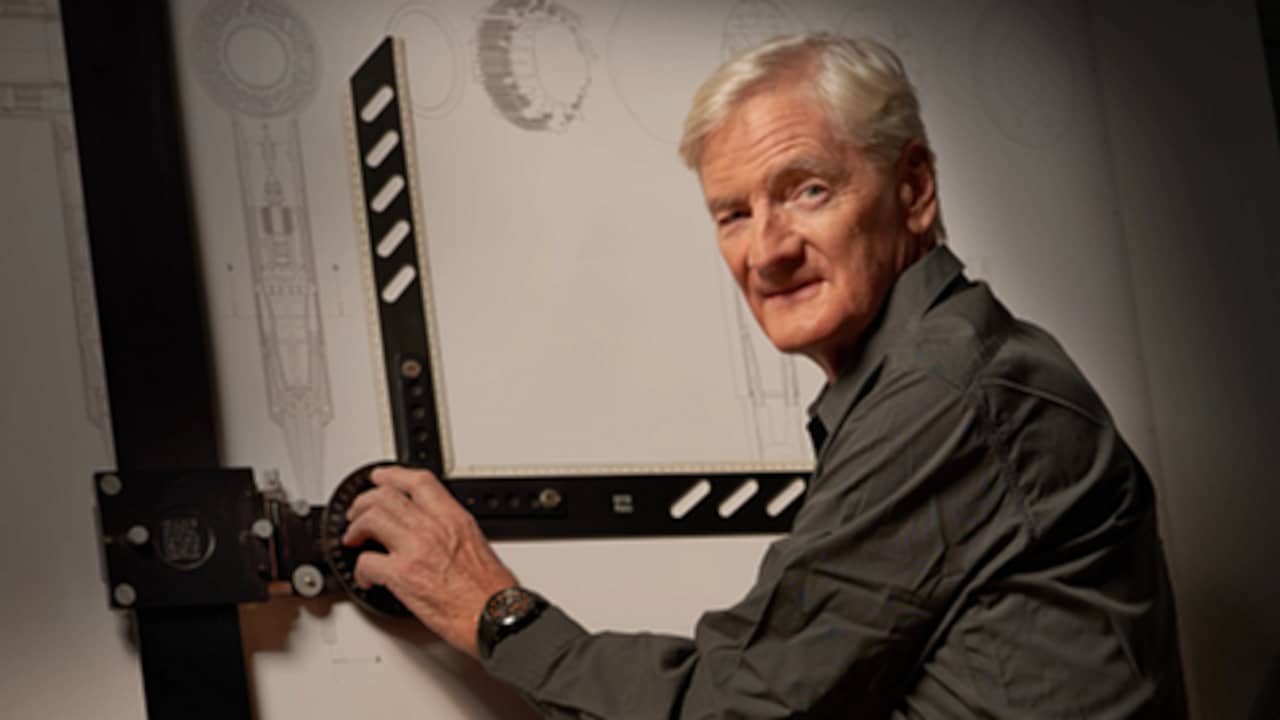You probably know Dyson from the cordless vacuum cleaners, bladeless fans or the hand dryers that can be found in almost every public toilet. The British inventor James Dyson is at the cradle of all these products. “We are never done and always dissatisfied,” he tells NU.nl about the success of his company.
James Dyson is on a flash visit in Amsterdam. There, the company opened its new headquarters for the Europe, Middle East and Africa markets last year. He may be 75 years old, but Dyson is in top shape. He is still involved in the company every day as chief engineer and regularly travels the world.
In a building on the IJ, Dyson talks about his distant ancestors. “I’m Dutch for a small part,” he says. It is partly the reason why the office is located in Amsterdam. It’s also just a beautiful city, he says. And he praises the Dutch climate for inventors: “You invented bluetooth!”
The seed for Dyson (the company) was planted in 1978. That year, James Dyson bought a vacuum cleaner that he was dissatisfied with. As soon as the vacuum cleaner bag filled with dust, the device lost suction power. So the Brit invented a bagless vacuum cleaner with a new suction technology. As a result, the vacuum cleaner would always continue to suck properly. Fifteen years and 5,127 prototypes later, he had cracked the code.
The Dyson vacuum cleaner is now a household name worldwide. New versions are still appearing. The perfect vacuum cleaner does not exist. “Every time inventors come up with something, they come up with something new,” says Dyson. “That’s a frustrating trait, but it also makes them good at their jobs.”
New battery without pollutants
“We reinvented everything,” Dyson reflects on his career so far. “It started with the engine. We made it smaller and more powerful. Now we have a new kind of laser. With it we can map dust particles on the ground so that nothing is left behind. This was unthinkable a few years ago.”
Dyson hopes to release a new type of battery in the coming years. The company follows the same route for this as in the development of the motors in its products. The battery must be smaller, more efficient and more powerful than existing batteries. Dyson keeps hammering away at those key words.
The batteries are made in Singapore “without dirty chemicals and minerals”. The company has been working on the batteries here for almost ten years. When we will see them in Dyson products remains a mystery for now.
‘Copying is welcomed in the commercial world’
After the success of Dyson’s corded and bagless vacuum cleaners, variants from other brands followed. The designs are sometimes quite similar to Dyson’s. The inventor does not see similar devices as a compliment. “At school you weren’t allowed to copy homework,” he says. “That was cheating, you were suspended.”
“Cheating is tolerated and even welcomed in the commercial world,” says Dyson. “Because people think it’s unfair if someone has a monopoly. I think the exact opposite. Companies should have their own ideas, their own technology and their own style. Only then will the consumer really have freedom of choice.”
People want variety, says Dyson. “If everyone imitated The Beatles or Taylor Swift, it would quickly become boring. Look at telephones. They are similar in that companies copy each other’s success. The customer would benefit more if they all did something different.”
Dyson appliances have a recognizable design. And the name Dyson immediately brings to mind the vacuum cleaner. How strange is it really when your name changes to a brand? “I’ve never regretted using my last name,” says Dyson. “I was solely responsible when we started. Our competitors are big brands like Miele, Electrolux and Bosch. But I’m not an anonymous concern, I’m an individual. And it’s an easy name to remember.”

Youth fixes the future
Dyson is now 75 years old, but he doesn’t think about stopping. The world is facing major issues, such as climate change and how we deal with sustainability. Dyson is responding to the problem with a few devices. For example, with headphones that measure the air quality or a fan that blows clean air through the room.
What’s next? “I don’t know what’s going to happen, otherwise I wouldn’t tell you,” he laughs. “But I am convinced that the important issues surrounding climate and pollution can be solved. And with scientific and technical inventions.”
He seems to leave the ideas for this largely to young scientists and inventors. “We have to give them the space to be naive and think differently. Let’s stop constantly naming problems and let’s open up to possible solutions.”
